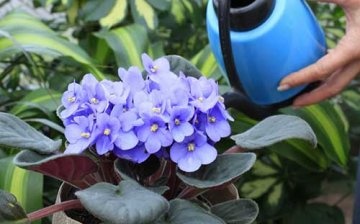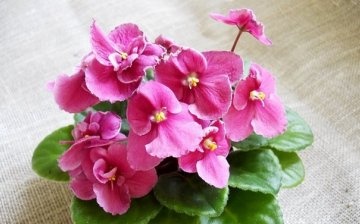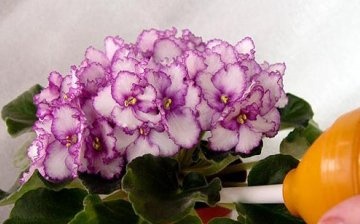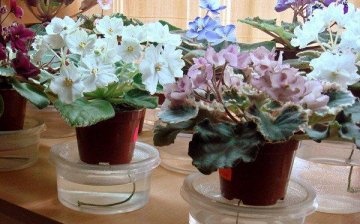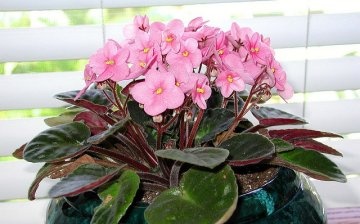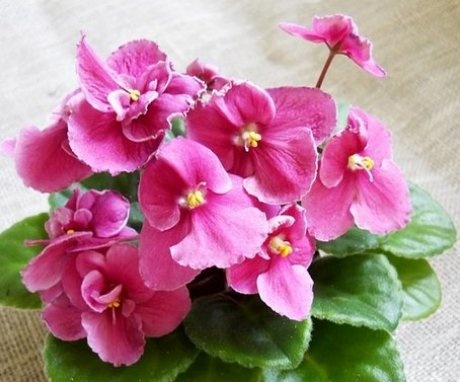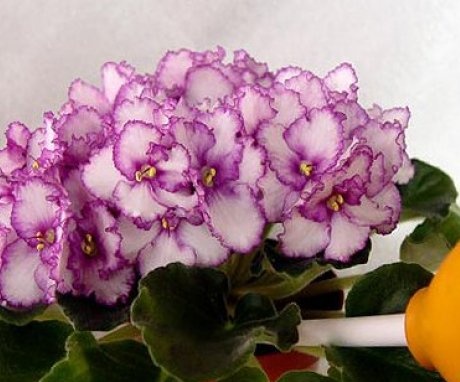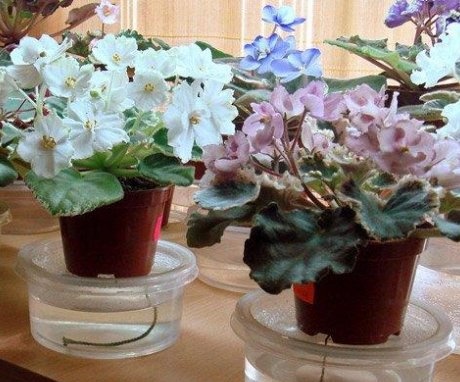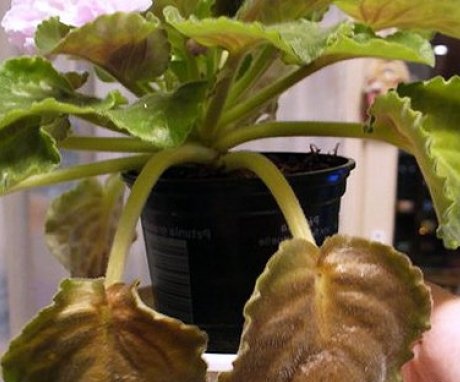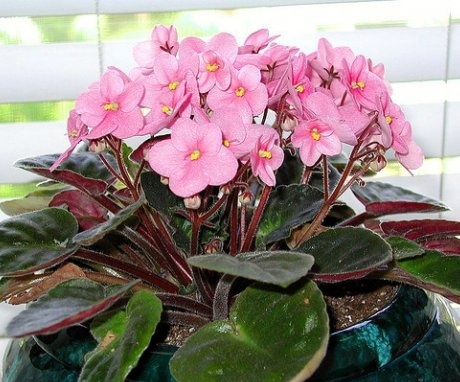Tips for flower growers: how to properly water violets
Violets can be attributed to sissies, however, they respond with gratitude to proper care and, especially, watering. Breeders were able to breed many varieties of violets, each of which has its own distinctive features and characteristics in care.
Content:
- Species groups of violets
- The best varieties for home
- How to properly water violets
- Watering methods for violets
- The consequences of improper watering and their elimination
- What to look for when growing a flower
Species groups of violets
Despite the capriciousness, the flower is very popular among amateur flower growers around the world, and breeders are striving to bring out more decorative and large varieties.
When choosing a variety for growing a flower at home, you need to rely on the features flowering... For beginners, it is not recommended to purchase new items; it is better to focus on proven plants.
Due to the huge varietal variety, violets are usually classified according to species groups:
- Collectible - they are distinguished by large flowers 5-7 cm in diameter. The flower petals are larger than those of other species and have a rich palette of shades: from snow-white to ink. A feature of such flowers is the structure of the flowers, which have wavy, lush and double shapes. Collectible violets are grown for exhibitions or personal collection due to their decorative effect.
- Variegated. These flowers have earned their name by the variegated color of the leaves. Blotches can be spontaneous or sequential. Border of the leaf is often observed along the edge. Variegated species have not only a decorative appearance of foliage, but are also spectacular during flowering. Flowers of different shades can be simple or double, large and small.
- Industrial or commercial. This includes varieties that are grown on plantations for the purpose of marketing. These are the most common plants that have a simple flower shape and are used in interior decoration for various events. These violets are distinguished by a long flowering period and ease of maintenance, due to which they can often be seen on window sills. The disadvantage of this group can be considered inefficiency breeding, because varietal characteristics are not transmitted to offspring.
- Ampelnye. These violets are distinguished by the miniature size of the bushes and flowers, which often have a uniform color. There are creeping varieties of this group, which quickly form a blanket of flexible shoots up to 50 cm and abundantly strewn with flowers. It is convenient and practical to decorate balconies and gazebos with such violets by planting plants in hanging pots. Violets of the ampelous group are unpretentious in care and are easy to breed.
For a beginner grower, knowing these groups will make it easier to choose the right plant.
The best varieties for home
Experienced flower growers believe that ordinary European varieties of Saintpaulias for home cultivation are the best, because the history of their selection goes back many years, during which their characteristics have been developed and strengthened.
Among the most common varieties are:
- Bellay Snowcon. During flowering, a spherical inflorescence of snow-white flowers is formed on a miniature bush.
- Arctic Frost. A varietal, but unpretentious variety that will bloom in almost any conditions. Flowers come in a variety of shapes and colors.
- Apache Midnight. Flowers of ink color and weak white edging will not leave indifferent any connoisseur of violets.
- Winter Parasol. This variety is deservedly called royal, thanks to the delicate creamy double flowers of huge sizes.
- Max Saufern Springtime. The plant forms a miniature bush, abundantly strewn with burgundy-white flowers.
- Ruffle Skies. Differs in large double flowers with wavy petals at the edges, which have a deep dark blue color.
- Eblons Rose. Violet got its name from the similarity of colors with roses, delicate pastel shades. The tips of the petals are decorated with a wavy pale green border.
- Aarons Westcoast Pig. Lavender flower petals with lilac or purple blotches border the yellow center.
When choosing a plant, their characteristics must also be taken into account: some are unpretentious in care, while others will require increased attention and special conditions of detention.
How to properly water violets
From the right glaze Saintpaulia depends on their health, flowering and even life. A whole method of watering these beauties has been developed:
- Do not pour over violets with cold tap water.
- Check the soil before each watering. And if it is wet, then irrigation should be postponed.
- Watering should be done regularly but in moderation. Do not overmoisten the plants and allow water to get on the leaves.
- The violets themselves can let you know about the watering time by dropping the lower leaves.
- It is best to water at the same time, maintaining the regime. But if the plant grows outdoors, then seasonal temperature fluctuations should be adhered to.
The water quality must be high. You can use tap water at room temperature. And it is better to clean it in advance with a filter and it is important that the irrigation water does not contain harmful impurities and bleach. Also, experts do not recommend using melt and rainwater due to poor ecology.
A small amount of citric or oxalic acid will help reduce the hardness of the water.
However, the plant can be watered with such water no more than once a month. The rest of the time, you can use slightly boiled water.
Watering methods for violets
There are three ways to water Saintpaulias:
- watering from above - water is poured in a thin stream along the edge of the pot so as not to erode the top layer of soil and not to wet the leaves and, especially, the point of growth of the plant. With the appearance of water in the pan, irrigation ends
- watering through the pallet - the liquid is poured into the pallet in such an amount that the soil can absorb. When the ground from above is moistened, excess water is drained
- wick irrigation - a fabric tape (wick) is passed through the hole in the flowerpot, the free end of which is dipped into water during watering. Through the wick, moisture in the right dose will enter the flowerpot
The dormant period of Saintpaulias usually occurs in winter. During this period, the plant does not need a large amount of moisture, so watering is noticeably reduced. In winter violets it is recommended to water when the soil dries well, but do not allow the earthen coma to dry out too much.
The consequences of improper watering and their elimination
Failure to comply with the rules glaze violets can damage root system... First, the root hairs suffer, through which the plant draws in moisture, and then all the roots get sick. This can lead to flower disease and death.
Signs of improper watering:
- stems, leaves and flowers have a drooping appearance
- the plant sheds buds and flowers
- young leaves have an irregular shape
- the flower falls ill with chlorosis, some of the leaves die off
- the whole flower becomes lethargic, leaves fall
- a space is formed between the soil and the wall of the pot
- the ground turns green and smells like mold
- rotten roots come out through the drainage into the pallet
Plant resuscitation:
- Carefully remove the plant from the pot and examine the roots carefully.
- Remove dead roots to healthy tissue and treat with solution fugnicide and root former.
- Plant the flower in a smaller pot.
- To produce pruning bush in proportion to the pruning of the roots. Initially, flowers, fruits and those parts of the plant that did not have time to develop should be removed.
- Provide the correct conditions, taking into account the previous mistakes.
- The first feeding carried out after the onset of development of the violet.
What to look for when growing a flower
In addition to proper watering, flower growers recommend taking into account other conditions for the healthy development of violets:
- location - light should be abundant, but diffused. Direct sunlight can burn the violet.
- the size of the landing container should be small. In a pot violet it should be a little crowded
- soil mixture and drainage. The soil should be light, water and air permeable. You can add some charcoal. At least a third of the pot is occupied by expanded clay drainage
- feeding carried out during the flowering of the plant once every two weeks, and during the dormant period no more than once a month
- transfer plants are held annually to renew the land
- hygiene - if violets accumulate on the leaves, it is recommended to wash with a warm gentle shower and leave to dry completely in a dark place
- for the decorativeness of the plant, faded buds, yellowed and damaged leaves should be removed in time
Although considered capricious, violets can still be grown in any home. To do this, you should follow simple rules, and most importantly, organize competent watering of the plant. To achieve success in cultivation, it is enough to choose the right place once, select the soil and develop your own regime and method of watering. And then grateful violets will gladly delight the eye with beautiful and abundant flowering.
More information can be found in the video:



